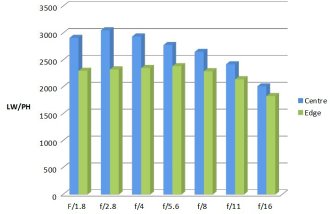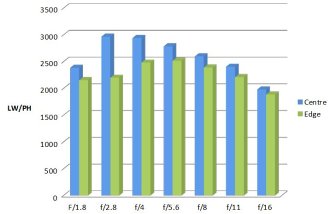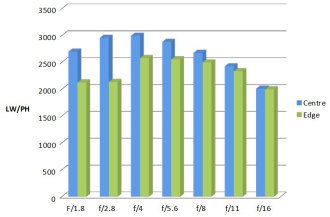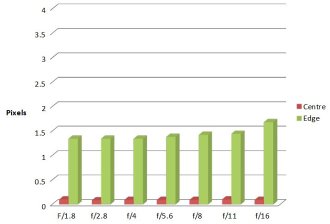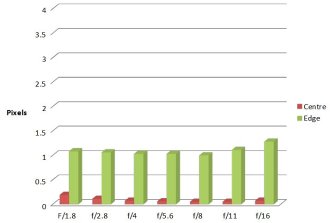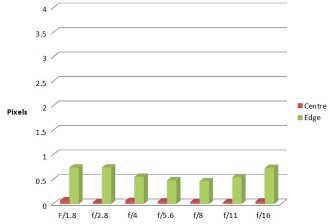Sigma 50-100mm f/1.8 DC HSM Art Review
Sigma 50-100mm f/1.8 DC HSM Art Performance
Sharpness reveals a very exciting performance. At 50mm the centre is outstanding from f/1.8 through to f/4, excellent from f/5.6 to f/11 and still very good at f/16. The edges are excellent from f/1.8 through to f/5.6 and are very good from f/8 to f/16.
70mm starts off centrally with an excellent performance at f/1.8, becoming outstanding from f/2.8 to f/4, excellent from f/5.6 to f/11 and remaining at a very good level at f/16. The edges are also a very high standard, very good at f/1.8 and f/2.8, excellent from f/4 through to f/8 and very good at f/11 and f/16.
85mm is centrally outstanding from f/1.8 through to f/5.6, excellent at f/8 and f/11 and very good at f/16. The edges start off at a very good degree of sharpness at f/1.8 and f/2.8, excellent from f/4 to f/11 and are still very good at f/16.
There is a similarly high performance at 100mm, with central sharpness being excellent at f/1.8, outstanding from f/4 to f/5.6, excellent at f/8 and f/11 and remaining very good at f/16. The edges are very good at f/1.8 and f/2.8, excellent from f/4 to f/11 and still very good at f/16.
How to read our charts
The blue column represents readings from the centre of the picture frame at the various apertures and the green is from the edges.The scale on the left side is an indication of actual image resolution as LW/PH and is described in detail above. The taller the column, the better the lens performance.
For this review, the lens was tested on a Canon EOS 600D using Imatest.
CA (Chromatic Aberration) results in colour fringing, and centrally the lens puts in a very fine performance. The overall values are mostly less than one tenth of a pixel, which is very creditable for any lens, never mind a zoom. The edges are not quite so well corrected, but still offer a very sound performance that can easily be corrected further in software.
How to read our charts
Chromatic aberration is the lens' inability to focus on the sensor or film all colours of visible light at the same point. Severe chromatic aberration gives a noticeable fringing or a halo effect around sharp edges within the picture. It can be cured in software.Apochromatic lenses have special lens elements (aspheric, extra-low dispersion etc) to minimise the problem, hence they usually cost more.
For this review, the lens was tested on a Canon EOS 600D using Imatest.
Bokeh is the quality of the rendition of out of focus areas, some lenses offering a smooth gradation in sharpness, others being more ragged in appearance. Telephoto lenses do have the advantage in that depth of field is naturally more restricted. The Sigma 50-100mm falls half-way between the extremes, although admittedly we have here a subjective assessment. Bokeh is pleasant, not the smoothest ever seen, but certainly very acceptable, especially in the light of the lens's other qualities.
Shooting against the light, flare was not apparent apart from a very slight reduction in contrast, and this only in the most extreme circumstances. It was basically not a problem.
Distortion affects the ability of a lens to render straight lines as straight lines, something particularly important with architectural subjects. The amount of correction is certainly very impressive. At 50mm there is -0.788% barrel, at 70mm +0.441% pincushion, at 85mm +0.964% pincushion and at 100mm +1.25% pincushion. Further correction in software is, of course, possible, but even as is the result is excellent.
Value For Money
Most lenses in the telephoto zoom bracket have much wider ranges than the Sigma 50-100mm f/1.8 DC Art lens, so its £829 price tag is hard to relate to any direct competitor. The Tokina 50-135mm T3 Cinema lens (£4499) is the closest in terms of focal length range, but hardly an easy alternative.
Of course, there are plenty of approximately 50-200mm and 55-300mm lenses available at less than half the price. With the new Sigma we lose out on the focal length, but what we do gain is exemplary performance and that bright f/1.8 constant aperture. Based on that performance, it's a fair price.
For more options have a look at the Top 10 Best Sigma lenses:
Add your message
Please login here or if you've not registered, you can register here. Registering is safe, quick and free.
photodo Stats
428 MTF tests
74 in-depth photodo reviews
100+ users join each day
Help the lens community by reviewing or rating a lens today via our lens search
Latest Lens Reviews
- Chinon 28mm f/2.8 Vintage Lens Review
- Canon EF 70-200mm f/4L IS II USM Lens Review
- Samyang AF 85mm f/1.4 EF Review
- Sigma 70mm f/2.8 DG Macro Art Review
- Samyang AF 24mm f/2.8 FE Review
- Meike 50mm f/1.7 Review
- Tamron 70-210mm f/4 Di VC USD Review
- Lensbaby Burnside 35mm f/2.8 Review
- Asahi Super Takumar 50mm f/1.4 Review
- Asahi Super-Multi-Coated Takumar 135mm f/3.5 Review
